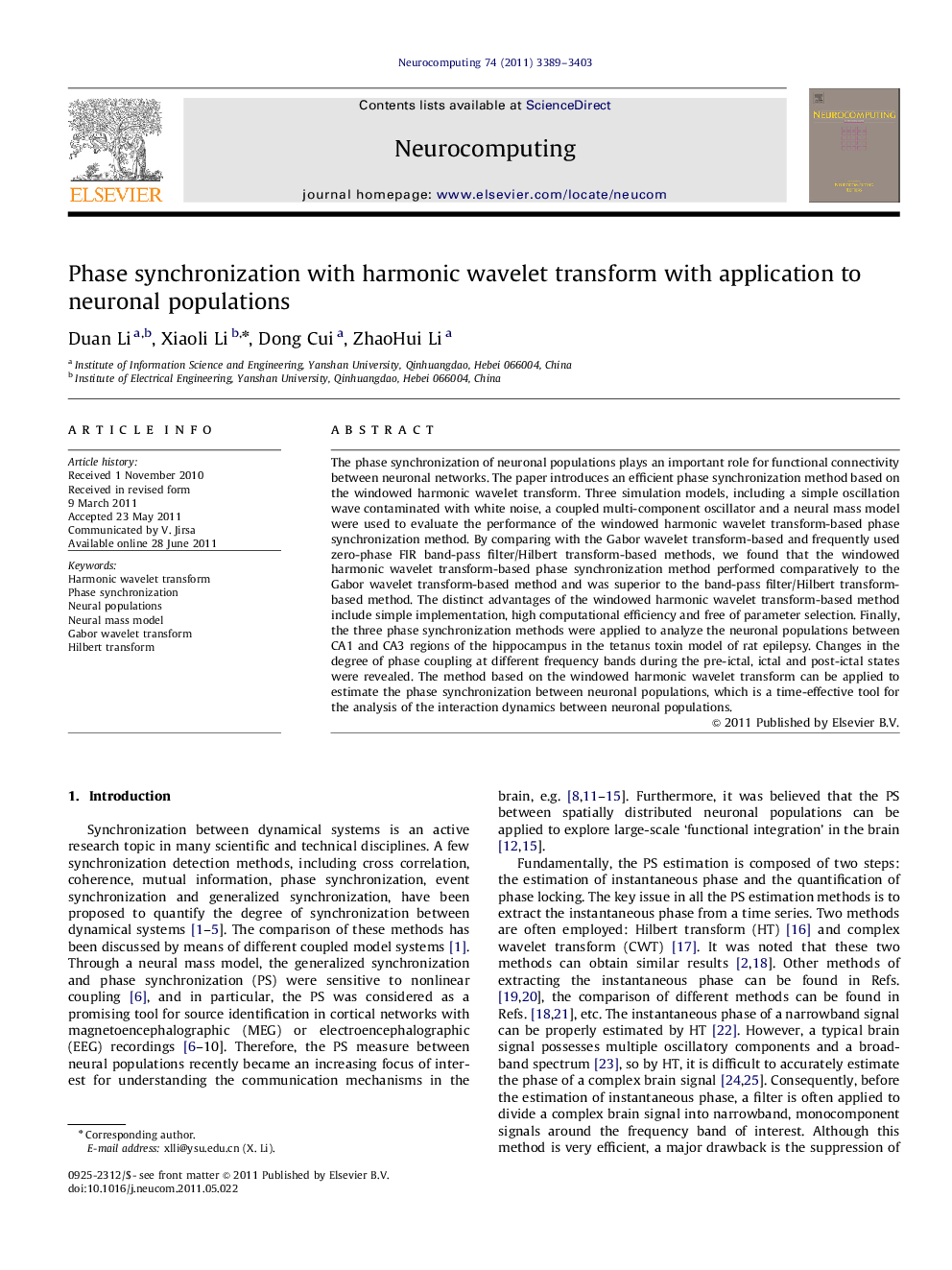| Article ID | Journal | Published Year | Pages | File Type |
|---|---|---|---|---|
| 408057 | Neurocomputing | 2011 | 15 Pages |
The phase synchronization of neuronal populations plays an important role for functional connectivity between neuronal networks. The paper introduces an efficient phase synchronization method based on the windowed harmonic wavelet transform. Three simulation models, including a simple oscillation wave contaminated with white noise, a coupled multi-component oscillator and a neural mass model were used to evaluate the performance of the windowed harmonic wavelet transform-based phase synchronization method. By comparing with the Gabor wavelet transform-based and frequently used zero-phase FIR band-pass filter/Hilbert transform-based methods, we found that the windowed harmonic wavelet transform-based phase synchronization method performed comparatively to the Gabor wavelet transform-based method and was superior to the band-pass filter/Hilbert transform-based method. The distinct advantages of the windowed harmonic wavelet transform-based method include simple implementation, high computational efficiency and free of parameter selection. Finally, the three phase synchronization methods were applied to analyze the neuronal populations between CA1 and CA3 regions of the hippocampus in the tetanus toxin model of rat epilepsy. Changes in the degree of phase coupling at different frequency bands during the pre-ictal, ictal and post-ictal states were revealed. The method based on the windowed harmonic wavelet transform can be applied to estimate the phase synchronization between neuronal populations, which is a time-effective tool for the analysis of the interaction dynamics between neuronal populations.
